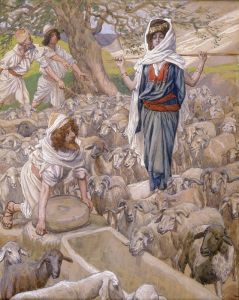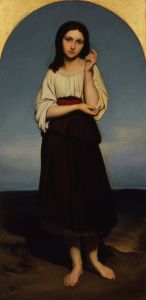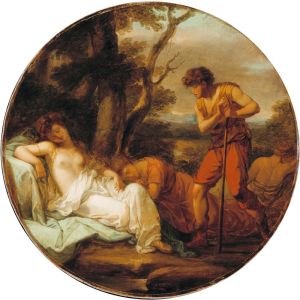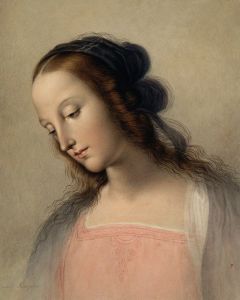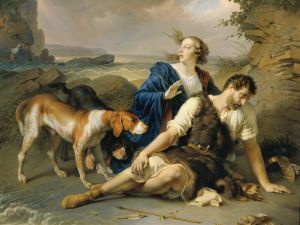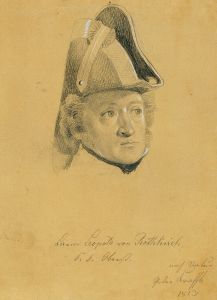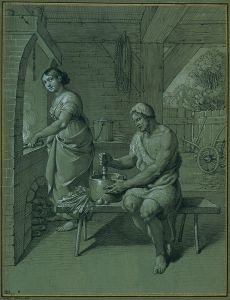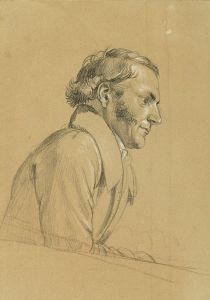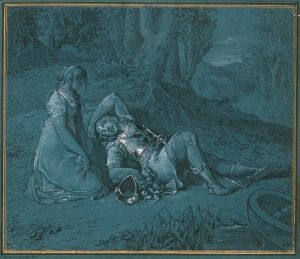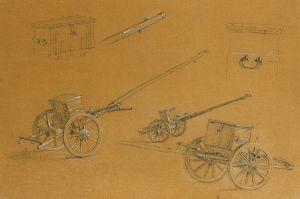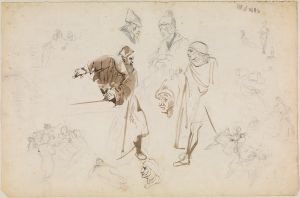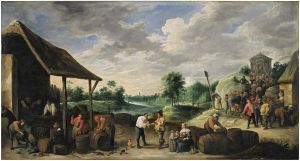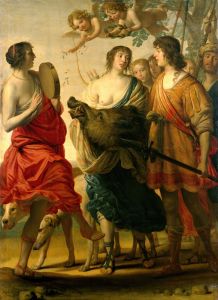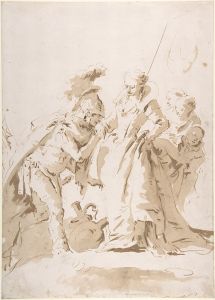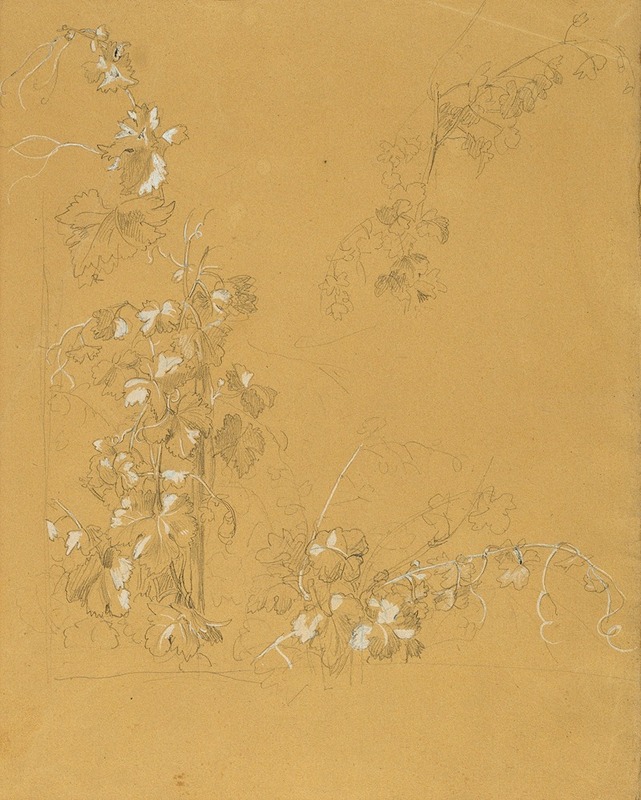
Weinstock, Studie zu ‘Hermann und Dorothea im Weinberg’
A hand-painted replica of Johann Peter Krafft’s masterpiece Weinstock, Studie zu ‘Hermann und Dorothea im Weinberg’, meticulously crafted by professional artists to capture the true essence of the original. Each piece is created with museum-quality canvas and rare mineral pigments, carefully painted by experienced artists with delicate brushstrokes and rich, layered colors to perfectly recreate the texture of the original artwork. Unlike machine-printed reproductions, this hand-painted version brings the painting to life, infused with the artist’s emotions and skill in every stroke. Whether for personal collection or home decoration, it instantly elevates the artistic atmosphere of any space.
Johann Peter Krafft was an Austrian painter known for his historical and genre scenes, as well as portraits. One of his works, "Weinstock, Studie zu ‘Hermann und Dorothea im Weinberg’," is a study related to the larger theme of "Hermann and Dorothea," a narrative poem by Johann Wolfgang von Goethe. This poem, published in 1797, tells the story of two lovers set against the backdrop of the French Revolution, exploring themes of love, displacement, and societal values.
Krafft's study, as indicated by the title, focuses on a scene involving a vineyard ("Weinberg" in German), which is a significant setting in Goethe's poem. The vineyard symbolizes fertility, growth, and the nurturing of relationships, aligning with the poem's exploration of personal and communal bonds. Krafft's work likely captures the essence of these themes through his depiction of characters and their interactions within this pastoral setting.
Johann Peter Krafft was born in Hanau, Germany, in 1780 and later moved to Vienna, where he became a prominent figure in the art scene. He studied at the Academy of Fine Arts in Vienna and was influenced by the Neoclassical style, which is evident in his precise and detailed approach to painting. Krafft's works often reflect a keen interest in historical narratives and the human condition, making him a suitable artist to interpret Goethe's literary work visually.
The study "Weinstock, Studie zu ‘Hermann und Dorothea im Weinberg’" would have been part of Krafft's process in developing a larger composition or series of works inspired by Goethe's poem. Studies are typically preliminary works that allow artists to experiment with composition, lighting, and character placement before committing to a final piece. They provide insight into the artist's creative process and the development of their ideas.
Krafft's ability to convey emotion and narrative through his art made him a respected figure in his time. His works were well-received, and he held several prestigious positions, including director of the Belvedere Gallery in Vienna. His contributions to art extended beyond his paintings, as he was also involved in the education and promotion of the arts in Austria.
While specific details about the study "Weinstock, Studie zu ‘Hermann und Dorothea im Weinberg’" are limited, it can be appreciated as part of Krafft's broader oeuvre, which sought to capture the spirit of the age and the complexities of human experience. His engagement with Goethe's "Hermann and Dorothea" reflects a common practice among artists of the time to draw inspiration from literature, creating a dialogue between visual art and written word.
Krafft's legacy is preserved in various collections, and his works continue to be studied for their artistic merit and historical significance. His interpretation of Goethe's themes through the medium of painting offers a unique perspective on the cultural and social issues of his time, making his studies and finished works valuable to both art historians and literary scholars.





